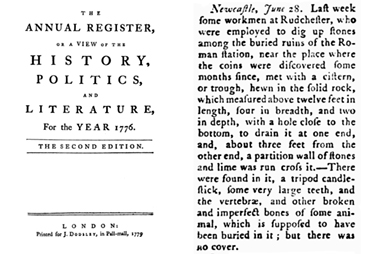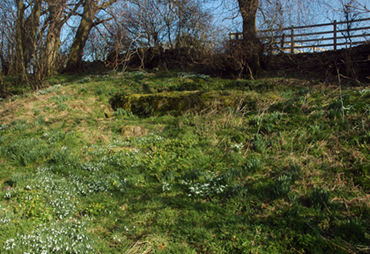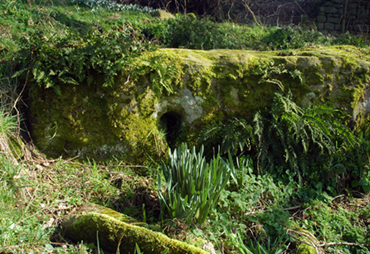Rudchester Giant's Grave
In one of the fields in the Rudchester gardens there is a Roman cistern, commonly known as the Giant's Grave for obvious reasons. It was discovered in 1766 and is about 4m long, 1.5m wide, 0.5m deep and appears to have been chiselled from bed rock. It has a tooled base draining to a hole in its south west corner. When discovered, it had masonary across it and contained many decayed bones and an iron implement described as being like a three-footed candle stick. In about 1850, a statue of Hercules was found here and is now in the Great North Museum.

Annual Register 1766
Click here for a high resolution photograph in a new window:

Giant's Grave
Click here for a high resolution photograph in a new window:

Giant's Grave
Click here for a high resolution photograph in a new window:
Its use is unknown, although it could have been used for washing, tanning or perhaps brewing in the Roman Vicus. A manuscript written by Sir David Smith states thet "The old peasants here have a tradition that the Romans made a beverage somewhat like beer of the bells of heather (heath), and that this trough was used in the process of making such drink". There is also a Northumberland legend that the Picts had the art of preparing an intoxicating liquor from heather-bells and that died out with them.